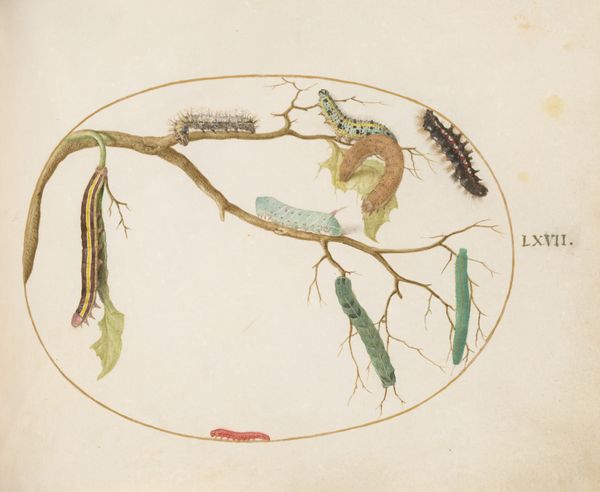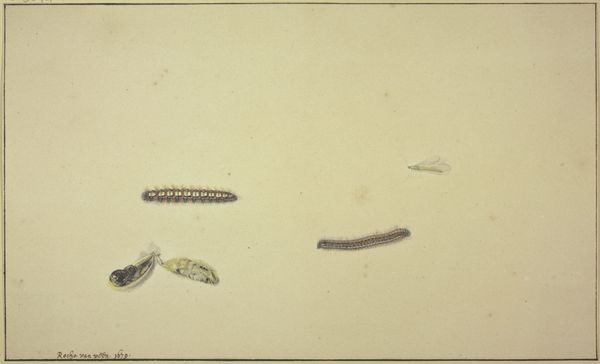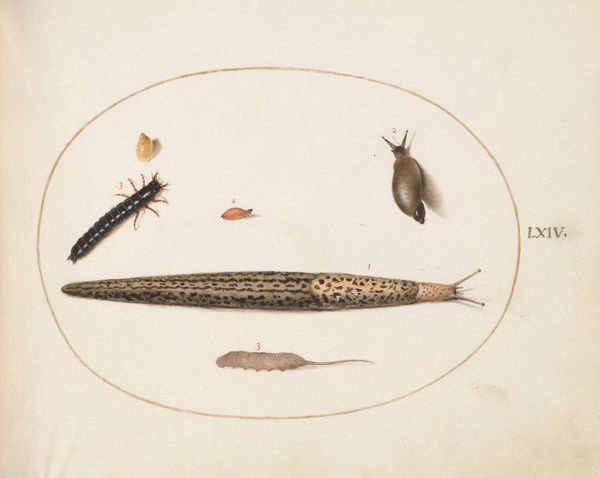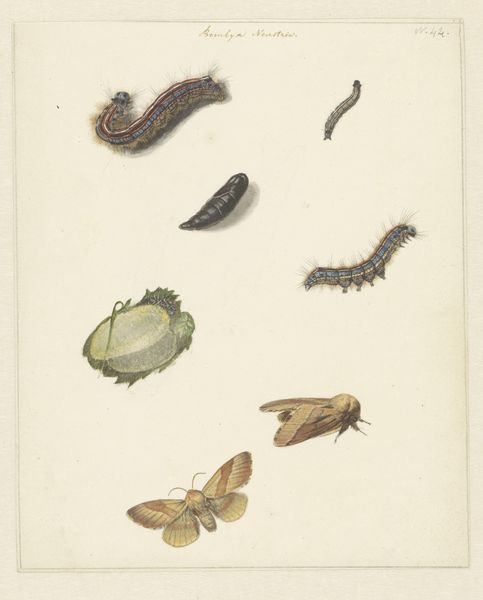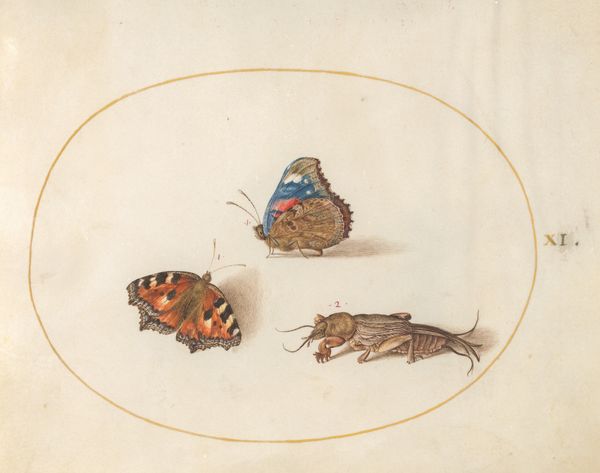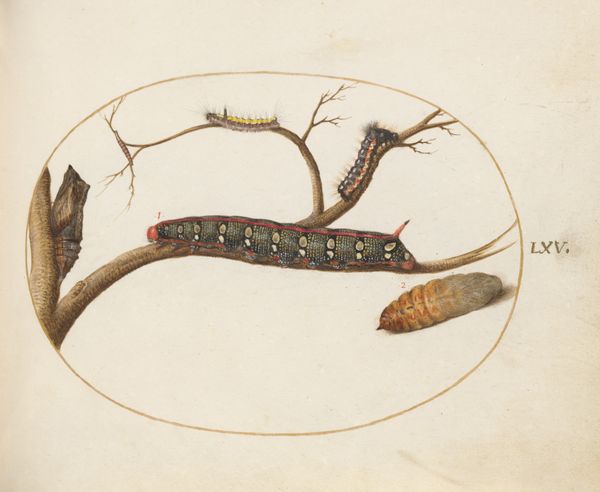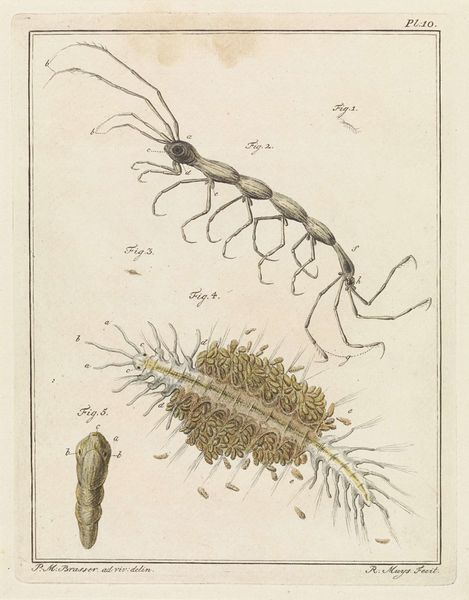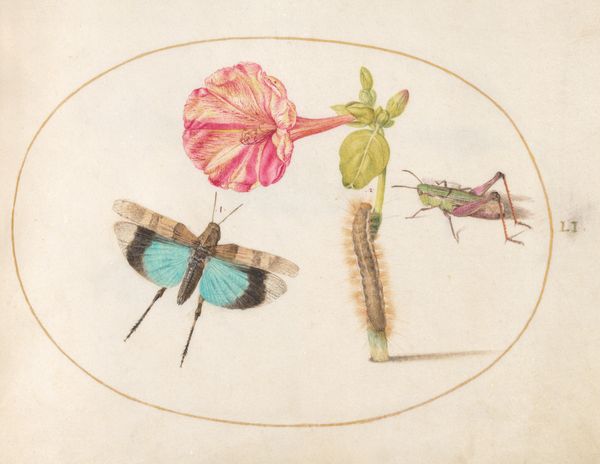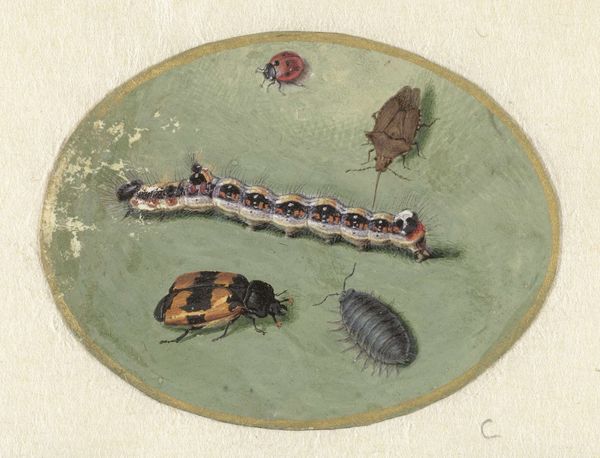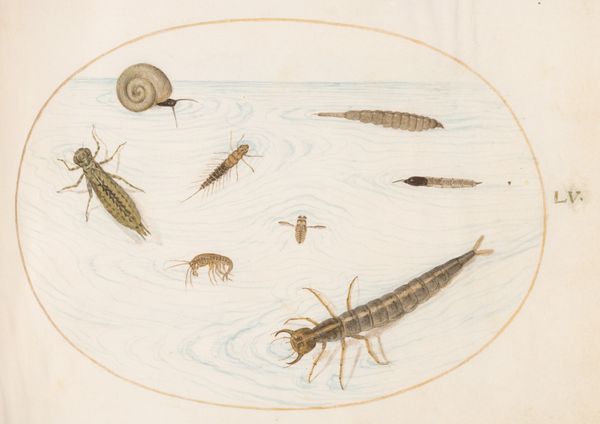
Plate 66: Lackey Moth Caterpillar, Figure of Eight Caterpillar, Grey Dagger Caterpillar, and Other Caterpillars c. 1575 - 1580
0:00
0:00
drawing, coloured-pencil, watercolor
#
drawing
#
coloured-pencil
#
11_renaissance
#
watercolor
#
coloured pencil
#
watercolour illustration
#
naturalism
#
watercolor
Dimensions: page size (approximate): 14.3 x 18.4 cm (5 5/8 x 7 1/4 in.)
Copyright: National Gallery of Art: CC0 1.0
Editor: This is Plate 66, a drawing of various caterpillars by Joris Hoefnagel, created around 1575 to 1580, using watercolor and coloured pencil. It strikes me as quite scientifically precise, almost like a catalogue. What catches your eye in this composition? Curator: Note how the artist orchestrates the disparate forms within a geometric frame, employing the vellum as both support and ground. What organizing principles can you discern beyond a simple taxonomy? Editor: Well, they’re arranged in an oval shape, and they don’t overlap, which makes it easy to distinguish each species. Is it just about clarity? Curator: Consider the relationship between each caterpillar's unique morphology, color and textural details and its spatial positioning in the pictorial space. How does this affect our interpretation of the object's composition? Does it challenge the Renaissance hierarchy of subject matter? Editor: The focus on such small creatures is interesting. Usually, we’d see portraits or landscapes from this period. The colours, too—very muted, earthy, except for that one bright yellow caterpillar. Is that contrast significant? Curator: Indeed, the tension created by colour and form generates dynamism, animating the surface. It subverts any notion of pure observation, pointing instead toward a deliberate construction of the image. Observe, too, how the stark whiteness of the ground accentuates a kind of tension. Does this add or detract? Editor: It makes them seem isolated, almost specimen-like. I see how the artist isn’t just recording, but also arranging and emphasizing certain elements. Curator: Precisely! The aesthetic rendering elevates them beyond mere representations, inviting us to consider the formal aspects of depiction itself. Editor: So it’s not just about the caterpillars, but how they're presented and what that says about art-making? Curator: It invites this form of analysis. Editor: This focus on form gives me a lot to think about. It shows the artist's creative choice behind, like you said, just an observation. Curator: Indeed, a deeper appreciation can come from seeing beyond the subject, into the artist’s compositional choices.
Comments
No comments
Be the first to comment and join the conversation on the ultimate creative platform.
